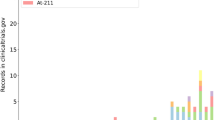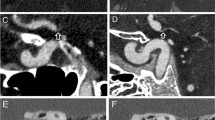Abstract
Intravenous contrast-enhanced computed tomography is utilised in radiotherapy lung treatment planning to improve the delineation of the tumour volume and nodal areas. In the resultant CT images, the electron density is increased within the vascular structures of the lung and the overall density in the lung volume may also be increased. As yet, it is unclear whether the change in density affects the accuracy of dose calculations based on this CT data. Two investigations were undertaken. Firstly, contrast-enhancement was simulated using an anthropomorphic phantom. In the second investigation, bulk density corrections were performed in an existing patient dataset. In both investigations, treatment plans were generated using both pre- and post-contrast datasets. The numbers of monitor units calculated in each of the plans were compared, as were the resulting isodose curves, dose volume histograms and physical mean lung doses. The numbers of monitor units calculated from the contrast- and non contrast-enhanced datasets agreed within 2%. The isodose curves and dose volume histograms showed very minor differences in size and shape. With the introduction of contrast agent, the physical mean lung doses calculated remained below the limit recommended for an acceptable plan. These results indicate that the introduction of contrast agent has a minimal dosimetric impact upon lung cancer treatment plans.
Similar content being viewed by others
References
Miller, J. and Joon, M.L.,Evaluation of the Combined Effect of Breath Hold and Contrast Enhancement on Dosimetry in the Thorax, The Radiographer, 49(2):77–82, 2002.
Van Dyke, J.,The Modern Technology of Radiation Oncology, Medical Physics Publishing, USA, 140, 1999.
Metcalfe, P.E., Kron, T. and Hoban, P.W.,The Physics of Radiotherapy X-rays from Linear Accelerators, Medical Physics Publishing, USA, 316, 1997.
Hernando, M.L, Marks, L.B. and Gunilla, C.B.Radiation Induced Pulmonary Toxicity: A Dose Volume Histogram Analysis in 201 Patients with Lung Cancer, Int. J. Radiat. Oncol. Biol. Phys., 51:650–659, 2001.
Graham, M.V., Purdy, J.A., Emami, B., Harms, W., Bosch, W., Lockett, M.A. and Perez, C.,Clinical Dose-volume Histogram Analysis for Pneumonitis after 3D Treatment for Non-small Cell Lung Cancer, Int. J. Radiat. Oncol. Biol. Phys., 45:323–329, 1999
Author information
Authors and Affiliations
Corresponding author
Rights and permissions
About this article
Cite this article
Lees, J., Holloway, L., Fuller, M. et al. Effect of intravenous contrast on treatment planning system dose calculations in the lung?. Australas. Phys. Eng. Sci. Med. 28, 190 (2005). https://doi.org/10.1007/BF03178715
Received:
Accepted:
DOI: https://doi.org/10.1007/BF03178715




